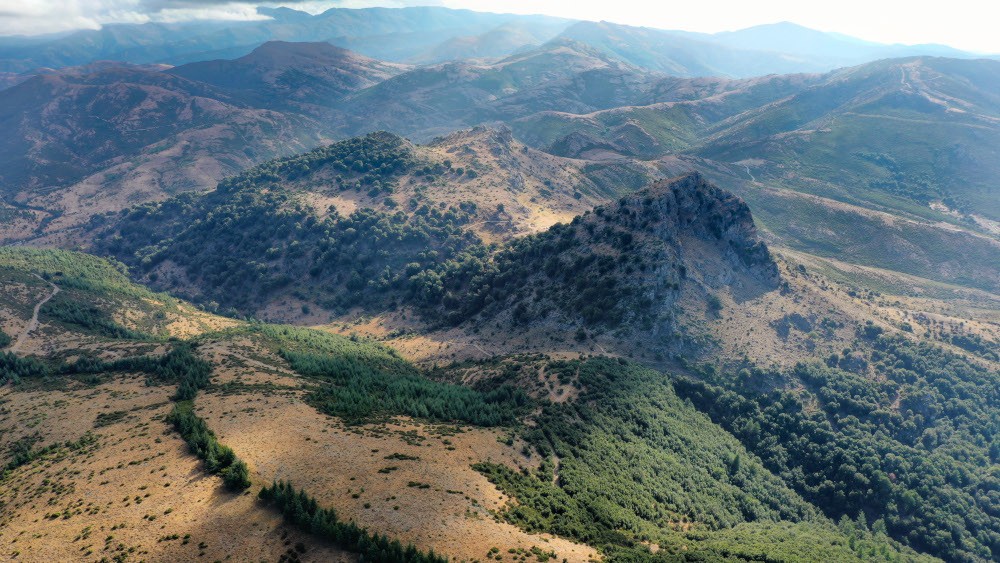Sardinia is among the most vulnerable regions of climate change, with increasing temperatures, drought and increasingly frequent extreme phenomena. A recent study analyzes the risks for the territory, highlighting the impact on infrastructure, ecosystems and communities, suggesting adaptation and prevention strategies
Given its central position in the Mediterranean Sea, Sardinia is among the climatic hotspots identified byIPCCresulting in one of the most vulnerable regions for the effects of climate change. In the next decades, in fact, the island will have to face a progressive rise in temperatures, a drastic reduction in rainfall. At the same time, an increase in extreme rainfall will occur, exposing the region to a high risk of drought and destructive events.
Il Climate change studies center of Greenway and Ecogest has processed data and forecasts for the next few years, providing crucial information to guide infrastructure and maintenance decisions at national and local level. The study aims to support the strategies of the competent administrations and raise awareness of the irreversible impact of climate change.
«Our study – declares Valerio Molinari, president of the CSCC and reference shareholder of Ecogest SpA co -founder of the Study Center – It aims to provide useful data to guide future infrastructure and maintenance choices both central and peripheral, in aid and support to the strategic choices of the administrations of competence, but also to give the right weight to the consequences of a progressive and unstoppable phenomenon as climate change ».
Research projections
Future projections indicate a general increase in the average temperature, which could grow up to 1.6 ° C by 2050, a value similar to that expected for central Italy. In the next 25-30 years, a reduction in days with minimal and maximum temperatures below zero is expected, accompanied by an increase in days characterized by heat waves and tropical nights. The latter could increase by about 17 days, with more marked variations along the eastern coast of the island.
These data, it is written in the note, emerge from Climate report of the Sardinia Regionrecently published by the Centor Climate Change Study Center, promoted by Greenway Group Srl and ECOGEST SPA. This report is part of a series of regional studies conducted by the CSCC on most of the Italian territory and the Mediterranean area, also intended for competent territorial bodies.
In Sardiniaover 6 thousand km² of territory are exposed to a significant landslide risk, of which about 1,649 km² fall within the high or very high risk categories. On the building level, about 12 thousand buildings (equal to 2% of the total) are classified to high danger, while over 42 thousand structures (7% of the total) are subject to an average landslide risk.
This scenario directly involves about 9 thousand families and 22 thousand people, exposed to a growing threat. The economic and cultural heritage is also at risk: over a thousand businesses and 324 cultural centers could suffer damage due to landslides and landslides.
Sardinia, a high -level area of flood
The hydrogeological risk is equally alarming, with approximately 823 km² of territory classified as high likely flood, equal to over 3% of the regional surface. In this area, about 29 thousand buildings (5% of the total) are highly vulnerable, as well as 6,600 companies, 32,202 families, 78,500 inhabitants and 352 cultural heritage.
A further threat deriving from climate change is the increase in fires and risk for forest areas. The heating beyond the seasonal thresholds and the persistent drought are putting the agricultural and zootechnical sector in crisis. In 2024, thousands of hectares of pastures and forests were devastated by the flames, further aggravating the environmental emergency.
Transport infrastructure at risk
According to the report, among the sectors most affected by climate change, transport infrastructures stand out. Their maintenance is essential to guarantee resilience to extreme climatic events. Among the proposed solutions are the installation of online cameras, meteorological stations, road load sensors and advanced electronic systems to regulate traffic and avoid congestion.
These tools represent strategic interventions to mitigate the effects of climate change and preserve the efficiency of infrastructure networks. The choice of new green systems is also important, which affects the state of conservation of road and motorway infrastructures.
«Among the solutions – concludes Molinari – We might think, for example, of autochthonous plants and trees in the new plants, rationalization and adjustment of the planning of maintenance interventions, application of new study and control technologies to the maintenance of greenery, starting from drones and continuous monitoring of the state of vegetation ».

